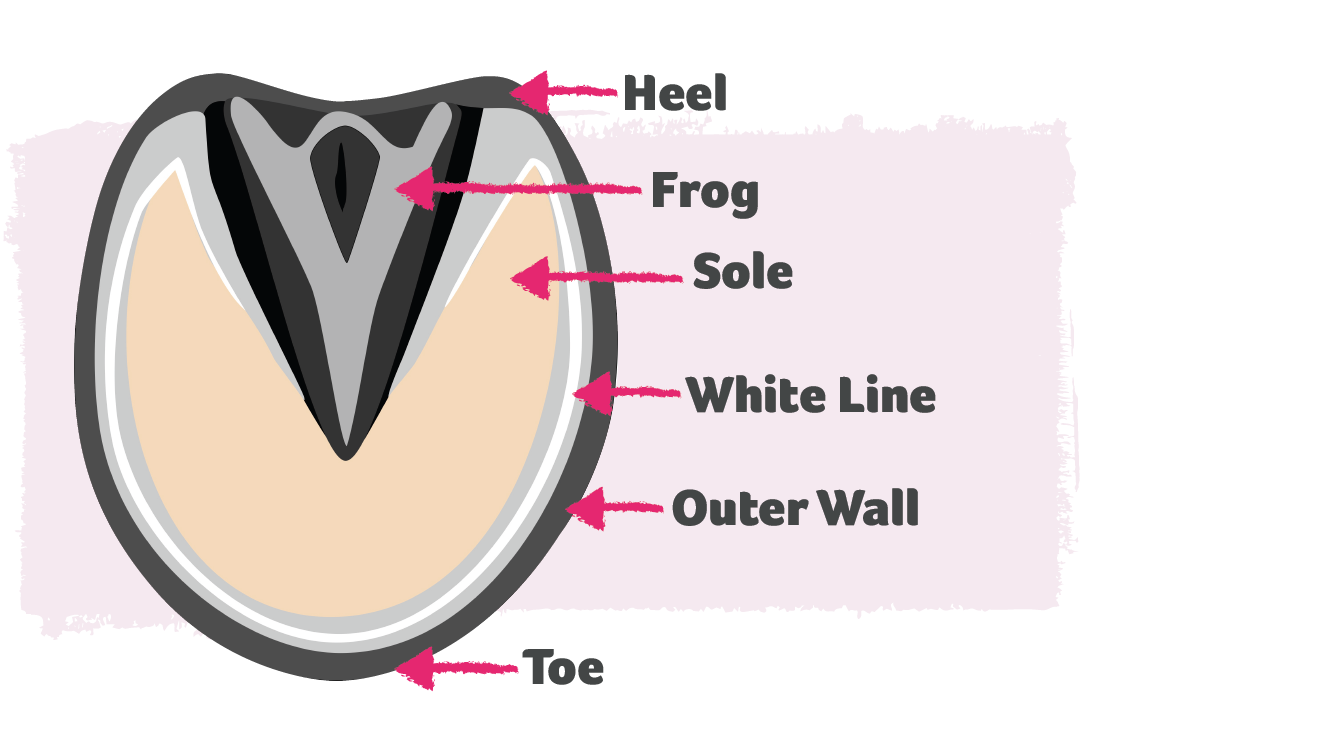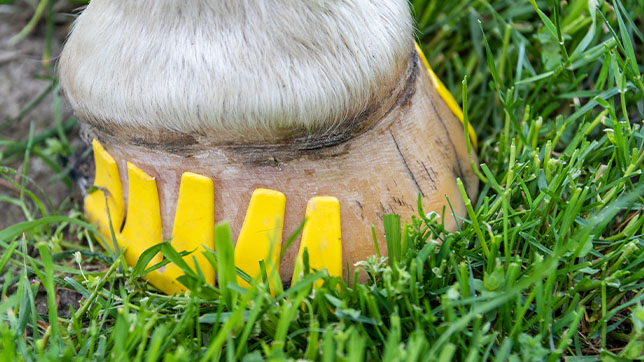26th January 2024
Alternatives to shoeing
Thousands of years ago, humans realised the need for a solution to the damage being done to domesticated horses’ hooves, and their only option was the humble horseshoe.
However, times have changed. Thanks to the affordability of new tech and ongoing research into equine science, owners now have so much choice if they feel traditional horseshoes aren’t right for their horses.
Here are a few of the reasons you may opt for an alternative to shoeing your horse:
- Hoof conformation.
- Brittle or sensitive hooves that can’t withstand the shoeing process.
- Strong hooves that aren’t easily bruised, so don’t benefit from shoes.
- Behavioural issues during shoeing, due to negative experiences in the past.
- Personal preference.
- Affordability.
The anatomy of a horse’s hoof
Have you ever heard the old phrase “no foot, no horse”?
Your horse’s hooves tell you a lot about their overall wellbeing. So, it’s essential we keep our horses’ hooves healthy.
Fun fact: Your horse’s hoof is made up of the same material as a rhino’s horn!
Hooves are incredible. Not only do your horse’s hooves give them amazing abilities, to canter cross-country courses and gallop across beaches, but they also play a vital role in circulation and fluidity of movement. If your horse’s hooves aren’t healthy, they’re more likely to encounter issues like long-term lameness.
There are sensitive and insensitive parts of the hoof. For example, the tough, triangular ‘frog’ (said to be called that because it looks a bit like a squashed frog!) is a sensitive section of the hoof and is necessary for your horse’s circulation. The ‘frog’ is also a shock absorber. Although, the ‘outer wall’ of your horse’s hoof is insensitive, protecting the nerves and structures within.

Did you know? Wild horses travel around 25 miles every day, across different types of terrain, to wear down their hooves naturally.
Alternatives to traditional shoes
Whatever your reasons for deciding not to opt for metal horseshoes, let’s explore the fantastic array of alternatives available…
Going barefoot
If keeping your horse barefoot appeals to you, a brilliant hoof care routine is important. You can ask your vet, farrier, or even an equine podiatrist about the best way to keep your horse’s hooves healthy without shoes.
By feeding your horse the right food (e.g. by including ‘biotin’ to support great hoof growth), they’ll be happier and healthier. If you need feeding advice, contact a vet or equine nutritionist.
Booking regular farrier appointments is essential too (at least every 6-8 weeks), so you can keep an eye on your horse’s hoof health and spot potential problems much sooner.
Picking out their hooves daily is the best way to check for any changes in your horse’s feet. Plus, it’s sensible to stick to soft ground when riding, wherever possible. Regularly riding on roads and stony ground can wear down hooves quickly (and can cause bruising or lameness in unshod horses).
It’s also worth getting a recommendation from your farrier about a good quality hoof dressing, as that will help to keep your horse’s hooves in tip-top condition between farrier visits.
All farriers must be qualified and registered with the Farriers Registration Council (FRC). At the time of writing, there are no officially recognised organisations regulating equine podiatrists or their practices. However, you can visit the Equine Podiatry Association’s website for more info.
Hoof boots
With brand new hoof boot designs popping up all over the place, choosing the right hoof boots for your horse can be a big challenge!
First, what activities do you enjoy with your horse or pony? Are they a happy hacker or dressage diva? Does your pony live like a pampered prince/princess, or do they love pulling a carriage? Hoof boots with a tough, textured sole designed for riding (and other strenuous pursuits) are best for busy equines. Whereas soft, rubber hoof boots may be more suitable for retired horses and ponies on box rest.
It’s worth considering your horse’s temperament, too. Hoof boots can be fiddly to fit, and it can take some trial-and-error to find the right type of hoof boot for your horse. Is your horse happy to have a human fussing with their hoof? Or does your horse hate having to stand still? If they dislike having their hooves handled, your pony may prefer going barefoot.
We recommend speaking to your vet, farrier, or equine podiatrist about selecting hoof boots that are perfect for your pony (or horse!).
Plastic shoes
Although they’re still new to many in the equine community, plastic shoes are becoming popular with an increasing number of horse owners.
Plastic shoes are said to be ‘ergonomically designed’, which basically means they meet the specific needs of your horse by being shaped to suit each individual hoof.
There are many benefits to using plastic shoes. As well as being highly flexible and shock absorbing, plastic shoes provide support to your horse’s frog and heel.

As with every decision you make about your horse’s hoof-wear, we suggest speaking to your vet or farrier for advice.
For information about traditional shoeing, view our article answering the question Why do horses need shoes?
Read our horse blog!
If you found this article useful, why not visit our horse blog for more news, insight and opinion pieces?
Need horse insurance?
Horse insurance can help cover the cost of veterinary treatment if your horse gets injured or falls ill.
We know pets
Our pets are part of the family. To achieve our vision of a better future for pets everywhere, we work with our partners, vets, and other veterinary professionals who are pioneering the latest advancements in animal care. Our campaigns, articles, and events are crafted to support, educate, and celebrate pet owners, while our policies are designed to provide peace of mind at an affordable price.
Yet our policies don’t just protect against the unexpected – they have purpose, too.
Since we were founded over 25 years ago, we've provided industry-leading policies that protect the nation’s pets, while also making a difference to animal welfare and our planet. Thanks to you, our policyholders, we've donated over £9 million to more than 830 animal welfare charities and conservancies, helping to support vulnerable pets and wildlife around the world.
We’re proud to be wildly different. Are you?
